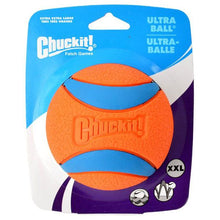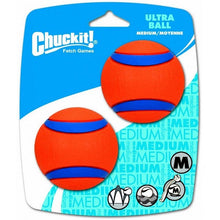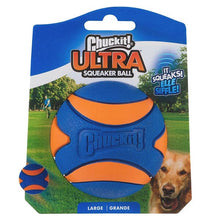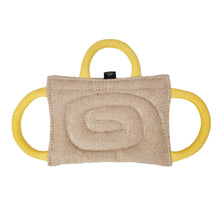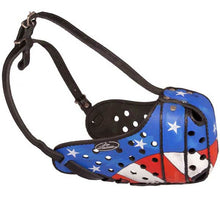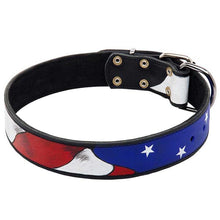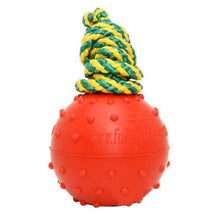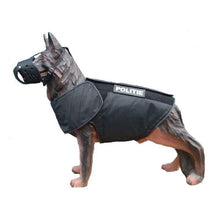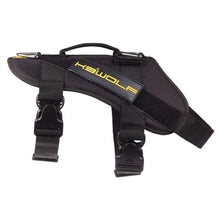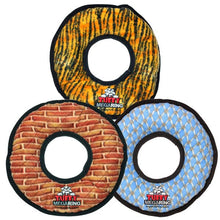Fall Safety Tips For German Shepherds Dogs

As summer turns into fall, more dogs and their owners are outside enjoying the change of seasons. This special time of year ushers in cooler temperatures, the changing of the leaves, and it also brings with it unique hazards that can be harmful to dogs.
Some of the things to protect your dog from in the fall include:
Active wildlife
Wildlife is on the move during the fall. Many critters are out hunting before winter or getting ready for hibernation. These animals include venomous snakes, skunks, coyotes, and bears. Even seemingly harmless animals, like deer, squirrel, and rabbits, can pose a safety risk for dogs that like to chase them, possibly right over the fence.
Couple this increase in wild animal activity with the increased friskiness in your dog and you could run into a problem, literally. To help keep your dog safe, be sure your fences and gates are secure and that you keep your yard trimmed so you can easily scan for snakes and other animals before letting your dog outside to play.

Protect your dog from fleas, ticks, and heartworms
Ticks, fleas, and mosquitos are still out in force during the fall. Just because the temperatures are falling doesn’t mean that it’s safe to forgo monthly prevention. All these vectors can pose serious health risks to your dog, and even you.
Dogs not on prevention are at risk of contracting lyme disease, heart worms, ehrlichiosis, anaplasmosis, rocky mountain spotted fever, babesiosis, bartonellosis, and hepatozoonosis. It’s important to talk to your vet and know the risks in your area so that you can protect your pet, home, and yard from dangerous disease spreading pests.
Toxic mushrooms and toadstools
While some mushrooms are harmless, many are toxic to dogs. It’s best not to allow your dog to forage for any fungus or get in the habit of eating random plants. The moist soil common in the fall is perfect for toxic mushrooms to grow. Be sure to check your yard often and make sure your dog doesn’t eat any while out hiking or camping. If your dog does eat a mushroom, call the ASPCA Poison Control Center at 888-426-4435 and/or your vet right away.

Candy hazards
Halloween marks the annual candy feast. But all that candy around is not safe for dogs and some artificial forms can be deadly. In fact, according to Trupanion, there is a 71% increase in chocolate toxicity in dogs during Halloween!
While most owners know that chocolate can be toxic for dogs, there may be a bigger danger lurking in your child’s trick or treat bag. Xylitol, otherwise known as birch sugar, is becoming more and more popular and showing up in all sorts of treats such as candy, gum, and even peanut butter.
Xylitol is highly toxic to dogs and there have been reports of dogs dying after eating a very small amount. The symptoms associated with xylitol poisoning include low blood sugar, decreased activity, weakness, staggering, incoordination, collapse, seizures, and death.
Halloween dangers
Along with candy, Halloween brings more dangers to dogs. Pranksters and creeps are out in force, hiding in the crowds of kids and their parents. To keep your dog safe, its best to keep them locked indoors so that they can’t be stolen, let out of the yard, or ingest something they shouldn’t.
Halloween can also be stressful to dogs. Kids in costumes, constant door chimes, and loud noises can make even the most chill dog, nervous. It’s usually best to keep your dog away from trick or treaters for this reason. Unfortunately, it’s very hard to control the environment on Halloween and the only true way to do so is through prevention of problems.
One fun way to prevent unwanted interactions is to simply greet trick or treaters on your porch and never open your door. However, if you’re going to have kids knock on your door, consider crating your dog or keeping them in another room so they can’t escape, scare a child, or worse, inadvertently bite someone.

Allergy season isn’t over
Mold, ragweed, tree pollens, sagebrush, pigweed, goldenrod, lamb's quarters, and curly dock are common fall allergens that can trigger allergic reactions in dogs. If your dog suffers from severe fall allergies, its best to schedule a vet visit early in the season to start preventions, such as a Cytopoint injection. Washing their paws, face, and stomach daily can also be helpful.
It gets darker earlier
After the long days of summer, it’s easy for the darkness to creep up on you. While out walking your dog, be mindful of the time in the evening and consider using reflective gear for you and your dog. For your own safety, it’s also not a bad idea to carry pepper spray.
Watch out for antifreeze
As temperatures start dropping, people start using antifreeze. Unfortunately, antifreeze is lethal for dogs and cats and its sweet scent is also attractive to pets. Every year, many pets are poisoned by antifreeze. Don’t let your pet become one of them. Keep all antifreeze away from pets and immediately clean up any spills according to package directions.

Protect your pet’s joints
Just like people, dogs can suffer from painful joint pain as the temperatures drop. Be mindful of older dogs and dogs suffering from arthritis, joint, or spine problems. If your dog seems stiff or painful, you can help by keeping them warm or with natural supplements, such as glucosamine, chondroitin, and fish oil. If this doesn’t help, talk to your vet about options to make their life more comfortable such as acupuncture, cold laser, and medications.
Flu season for dogs, too
Dogs also can suffer from the flu and more so in certain geographic locations. According to Trupanion's Director of Veterinary Services, Denise Petryk, DVM kennel cough is also another fall illness that dogs can easily catch:
“Kennel cough is highly contagious and can cause a variety of symptoms ranging from dry cough for a couple days, to fever, anorexia, severe pneumonia, and death. Keep your dog away from other dogs when coughing for at least a week after you hear the last cough.”

Update tags and check collars
Since dogs are enjoying the outdoors more during the fall, it’s the perfect time of year to check their tags and collar. Be sure the information on their tag is up-to-date and legible. Replace collars with worn, loose clasps.
We hope you find these safety tips helpful and that you and your dog enjoy a safe and fun fall season! Please feel free to share with your friends.
You may also like: Pumpkin: The Amazing Superfood For Dogs




